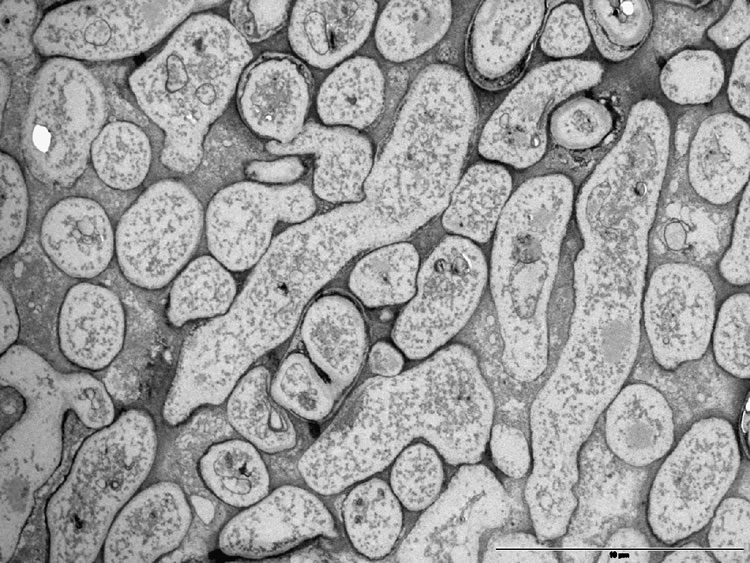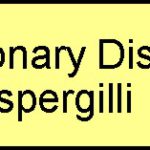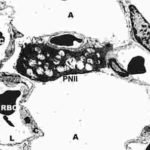Date: 10 February 2014
An aspergilloma (or fungal ball) is a mass of fungus found inside the body, for example inside cavities such as the lungs or sinuses, or as abscesses in organs such as the brain or kidney. They are made up of threadlike fungal strands (hyphae) that are densely packed but only around 1/200 of a millimetre in diameter. A mass of hyphae is called a mycelium.
In this image, a slice through an aspergilloma has been imaged using a transmission electron microscope.
Copyright:
With kind permission from Dr Anne Beauvais, Unite des Aspergillus, Institut Pasteur, 25 rue du Docteur Roux, 75015 Paris
Notes: n/a
Images library
-
Title
Legend
-
Necrotic lung tissue in culture
Af=Colony of Aspergillus fumigatus
B=bacterial colonies
L=lung tissue
-
A photograph of part of the upper lung lobe of an immunosuppressed patient. The lung tissue shows extenive areas of necrosis due to invasive colonisation.
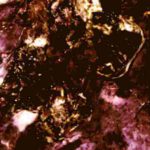
-
A photograph of a cavity in the upper lobe of the lung of a patient with ankylosing spondylitis. Such cavitation,which may be confused with prior tuberculosis, can follow fibrosis.
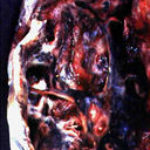
-
Plugs stained with Methenamine/silverActively growing mycelia of the fungus are a deep brown/black. Counterstaining shows the dense mucus of the plugs as predominantly orange.
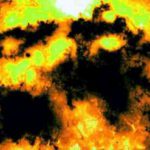
-
Sputum from an asthmatic patient showing plugs(casts). The development of plugs coincided with an increased prevalence and severity of episodes of asthma

-
microscopic characters Conidiophore stipes(C)1300-2800um long:Vesicles(V)40-70um wide,clavate:Phialides(Ph) uniseriate:Conidia(Con)3.5-4.0um long,smooth walled.

-
microscopic characters Conidiophore stipes(C)225-350um arising from hyphae(Hy):Vesicles(Ves)15-25um wide:Phialides(Ph)uniseriate:Conidia(Con)2.4-3.0um spherical to ovoid,roughened.


